Artistic reconstruction of the reptile adaptive radiation in a terrestrial ecosystem during the warmest period in Earth’s history. Image depicts a massive, big-headed, carnivorous erythrosuchid (close relative to crocodiles and dinosaurs) and a tiny gliding reptile at about 240 million years ago. The erythrosuchid is chasing the gliding reptile and it is propelling itself using a fossilized skull of the extinct Dimetrodon (early mammalian ancestor) in a hot and dry river valley.
Newswise — Just over 250 million years ago during the end of the Permian period and start of the Triassic, reptiles had one heck of a coming out party.
Their rates of evolution and diversity started exploding, leading to a dizzying variety of abilities, body plans, and traits, and helping to firmly establish both their extinct lineages and those that still exist today as one of the most successful and diverse animal groups the world has ever seen. For the longest time, this flourish was explained by their competition being wiped out by two of the biggest mass extinction events (around 261 and 252 million years ago) in the history of the planet.
A new Harvard-led study has rewritten that explanation by reconstructing how the bodies of ancient reptiles changed and by comparing it against millions of years of climate change.
Harvard paleontologist Stephanie Pierce’s lab shows that the morphological evolution and diversification seen in early reptiles not only started years before these mass extinction events but instead were directly driven by what caused them in the first place — rising global temperatures due to climate change.
“We are suggesting that we have two major factors at play — not just this open ecological opportunity that has always been thought by several scientists — but also something that nobody had previously come up with, which is that climate change actually directly triggered the adaptive response of reptiles to help build this vast array of new body plans and the explosion of groups that we see in the Triassic,” said Tiago R. Simões, a postdoctoral fellow in the Pierce lab and lead author on the study.
“Basically, [rising global temperatures] triggered all these different morphological experiments — some that worked quite well and survived for millions of years up to this day, and some others that basically vanished a few million years later,” Simões added.
In the paper, which published Friday in Science Advances, the researchers lay out the vast anatomical changes that took place in many reptile groups, including the forerunners of crocodiles and dinosaurs, in direct response to major climate shifts concentrated between 260 to 230 million years ago.
The study provides a close look at how a large group of organisms evolve because of climate change, which is especially pertinent today as temperatures continually rise. In fact, the rate of carbon dioxide released into the atmosphere today is about nine times what they were during the timeframe that culminated in the biggest climate change-driven mass extinction of all time 252 million years ago: the Permian-Triassic mass extinction.
“Major shifts in global temperature can have dramatic and varying impacts on biodiversity,” said Stephanie E. Pierce, Thomas D. Cabot Associate Professor of Organismic and Evolutionary Biology and curator of vertebrate paleontology in the Museum of Comparative Zoology. “Here we show that rising temperatures during the Permian-Triassic led to the extinction of many animals, including many of the ancestors of mammals, but also sparked the explosive evolution of others, especially the reptiles that went on to dominate the Triassic period.”
The study involved close to eight years of data collection and took a heavy dose of camerawork, CT scanning, and loads of passport stamps as Simões traveled to more than 20 countries and more than 50 different museums to take scans and snapshots of more than 1,000 reptilian fossils.
With all the information, the researchers created an expansive dataset that was analyzed with state-of-the-art statistical methods to produce a diagram called an evolutionary time tree. Time trees reveal how early reptiles were related to each other, when their lineages first originated, and how fast they were evolving. They then combined it with global temperature data from millions of years ago.
Diversification of reptile body plans started about 30 million years before the Permian-Triassic extinction, making it clear these changes weren’t triggered by the event as previously thought. The extinction events did help put them in gear though.
The dataset also showed that rises in global temperatures, which started at about 270 million years ago and lasted until at least 240 million years ago, were followed by rapid body changes in most reptile lineages. For instance, some of the larger cold-blooded animals evolved to become smaller so they could cool down easier; others evolved to life in water for that same effect. The latter group included some of the most bizarre forms of reptiles that would go on to become extinct such as a giant, long-necked marine reptile once thought to be the Loch Ness monster, a tiny chameleon-like creature with a bird-like skull and beak, and a gliding reptile resembling a gecko with wings. It also includes the ancestors of reptiles that still exist today like turtles and crocodiles.
Smaller reptiles, which gave rise to the first lizards and tuataras, went on a different path than their larger reptile brethren. Their evolutionary rates slowed down and stabilized in response to the rising temperatures. The researchers believe it was because the small-bodied reptiles were already better adapted to the rising heat since they can more easily release heat from their bodies compared to larger reptiles when temperatures got hot very quickly all-around Earth.
The researchers say they are planning to expand on this work investigating the impact of environmental catastrophes on evolution of organisms with abundant modern diversity, such as the major groups of lizards and snakes.

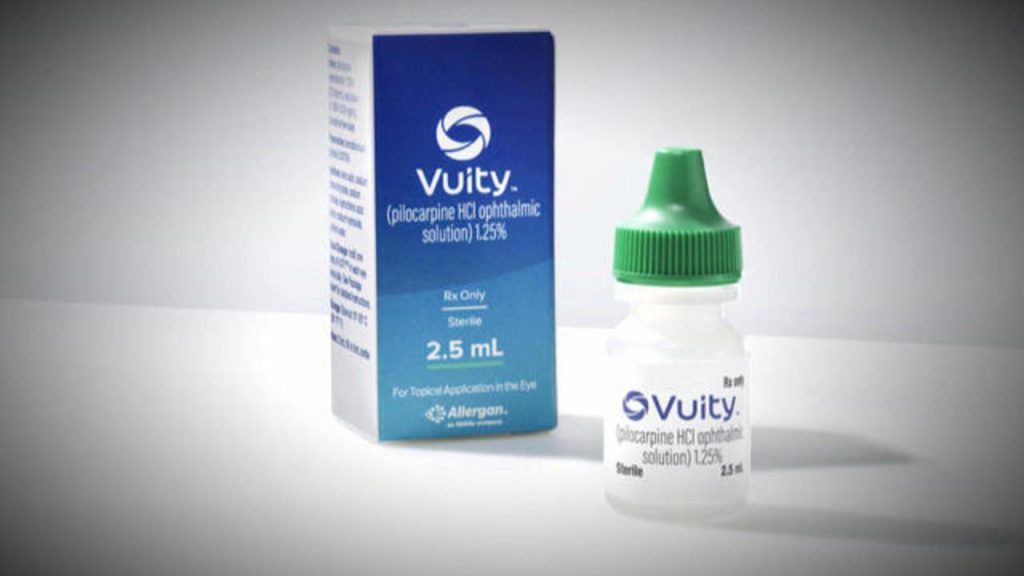 Called Vuity, the drop is applied to each eye once a day and starts working within 15 minutes of application. The makers say each drop lasts for at least six hours. As per the report, the drug is a formulation of a well-known compound known as pilocarpine.
Called Vuity, the drop is applied to each eye once a day and starts working within 15 minutes of application. The makers say each drop lasts for at least six hours. As per the report, the drug is a formulation of a well-known compound known as pilocarpine. Dr. Hashima Hasan,
Dr. Hashima Hasan, 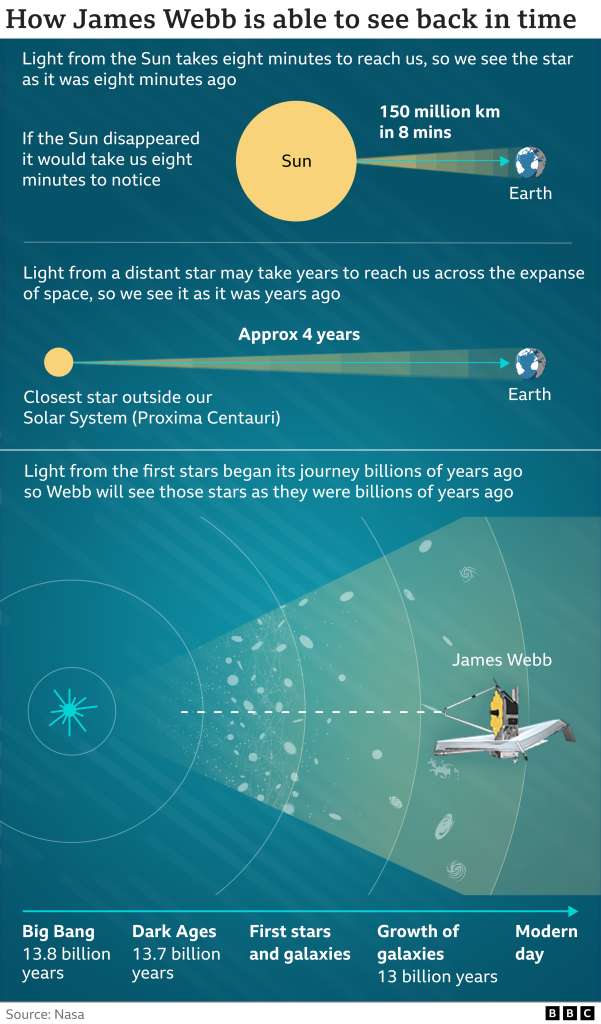 Further debut pictures from James Webb are due to be released by Nasa in a global presentation on Tuesday.
Further debut pictures from James Webb are due to be released by Nasa in a global presentation on Tuesday.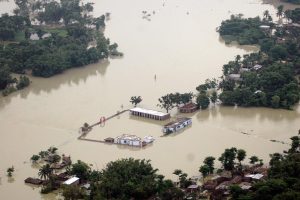 “Our results tell a tale of two hemispheres. The north has seen major reductions in river sediment transport over the past 40 years, while the south has seen large increases over the same period,” says lead author Evan Dethier, a post-doctoral fellow at Dartmouth. “Humans have been able to alter the world’s biggest rivers at rates that are unprecedented in the recent geologic record.” Dethier says. “The amount of sediment rivers carry is generally dictated by natural processes in watersheds, like how much rain there is or whether there are landslides or vegetation. We find that direct human activities are overwhelming these natural processes, and even outweighing the effects of climate change.”
“Our results tell a tale of two hemispheres. The north has seen major reductions in river sediment transport over the past 40 years, while the south has seen large increases over the same period,” says lead author Evan Dethier, a post-doctoral fellow at Dartmouth. “Humans have been able to alter the world’s biggest rivers at rates that are unprecedented in the recent geologic record.” Dethier says. “The amount of sediment rivers carry is generally dictated by natural processes in watersheds, like how much rain there is or whether there are landslides or vegetation. We find that direct human activities are overwhelming these natural processes, and even outweighing the effects of climate change.” About three-quarters of all Covid-19 deaths have been among seniors, including more than a quarter among people 85 and older, according to CDC data. And while racial and ethnic disparities have lessened over the course of the pandemic, the risk of dying from Covid-19 has been about two times higher for Blacks, Hispanics and American Indians compared to Whites in the US.
About three-quarters of all Covid-19 deaths have been among seniors, including more than a quarter among people 85 and older, according to CDC data. And while racial and ethnic disparities have lessened over the course of the pandemic, the risk of dying from Covid-19 has been about two times higher for Blacks, Hispanics and American Indians compared to Whites in the US. Einstein’s theory works well in explaining the way matter behaves on a large scale but clashes with the way quantum physics describes the gravity among the smallest observable particles. For years, Gionti has attempted to reconcile the two.
Einstein’s theory works well in explaining the way matter behaves on a large scale but clashes with the way quantum physics describes the gravity among the smallest observable particles. For years, Gionti has attempted to reconcile the two.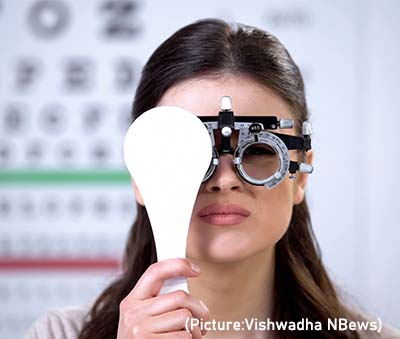 In 2017, SCORE2 clinical trial investigators reported that two types of anti-VEGF treatment were equally effective at improving visual acuity in people with macular edema due to CRVO or hemi-retinal vein occlusion (HRVO). CRVO affects the entire retina, while HRVO generally affects about half of the retina. Half of the study participants had been given Avastin (bevacizumab) while the other half received Eylea (aflibercept). Both drugs were administered by injection once per month for six months. At the six-month mark, the vision of participants in both groups had, on average, improved over three lines on an eye chart.
In 2017, SCORE2 clinical trial investigators reported that two types of anti-VEGF treatment were equally effective at improving visual acuity in people with macular edema due to CRVO or hemi-retinal vein occlusion (HRVO). CRVO affects the entire retina, while HRVO generally affects about half of the retina. Half of the study participants had been given Avastin (bevacizumab) while the other half received Eylea (aflibercept). Both drugs were administered by injection once per month for six months. At the six-month mark, the vision of participants in both groups had, on average, improved over three lines on an eye chart. “Today’s authorization is yet another example of the rapid innovation occurring with diagnostic tests for COVID-19,” Jeff Shuren, director of the FDA’s Center for Devices and Radiological Health, said in a statement.
“Today’s authorization is yet another example of the rapid innovation occurring with diagnostic tests for COVID-19,” Jeff Shuren, director of the FDA’s Center for Devices and Radiological Health, said in a statement.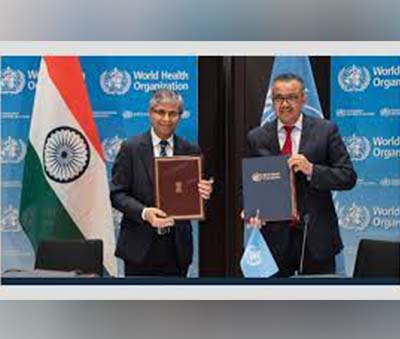 “Despite their widespread use, traditional medicine lack robust evidence, data and a standard framework preventing their integration into the mainstream healthcare delivery system,” Dr Singh said in an exclusive interview with ANI.
“Despite their widespread use, traditional medicine lack robust evidence, data and a standard framework preventing their integration into the mainstream healthcare delivery system,” Dr Singh said in an exclusive interview with ANI. “It’s really, really, really hard to walk people back from that ledge,” Gill said. Doomism “is definitely a thing,” said Wooster College psychology professor Susan Clayton, who studies climate change anxiety and spoke at a conference in Norway last week that addressed the issue. “It’s a way of saying ‘I don’t have to go to the effort of making changes because there’s nothing I can do anyway.’”
“It’s really, really, really hard to walk people back from that ledge,” Gill said. Doomism “is definitely a thing,” said Wooster College psychology professor Susan Clayton, who studies climate change anxiety and spoke at a conference in Norway last week that addressed the issue. “It’s a way of saying ‘I don’t have to go to the effort of making changes because there’s nothing I can do anyway.’” In addition to the protection offered by vaccination, many people across the country were infected during the first omicron wave over the winter, which means much of the population still has additional immunity.
In addition to the protection offered by vaccination, many people across the country were infected during the first omicron wave over the winter, which means much of the population still has additional immunity. UF has entered into a licensing agreement with a New Jersey company, Houndstoothe Analytics, in hopes of ultimately manufacturing and selling the device, not just to medical professionals but also to consumers.
UF has entered into a licensing agreement with a New Jersey company, Houndstoothe Analytics, in hopes of ultimately manufacturing and selling the device, not just to medical professionals but also to consumers. With a brief exception in the summer of 2021, Covid-19 has consistently been one of the top three causes of death for the past two years in the US, an
With a brief exception in the summer of 2021, Covid-19 has consistently been one of the top three causes of death for the past two years in the US, an  “We almost didn’t believe it at first, it was so much farther than the previous most-distant, highest redshift star,” said astronomer Brian Welch of the Johns Hopkins University in Baltimore, lead author of the
“We almost didn’t believe it at first, it was so much farther than the previous most-distant, highest redshift star,” said astronomer Brian Welch of the Johns Hopkins University in Baltimore, lead author of the 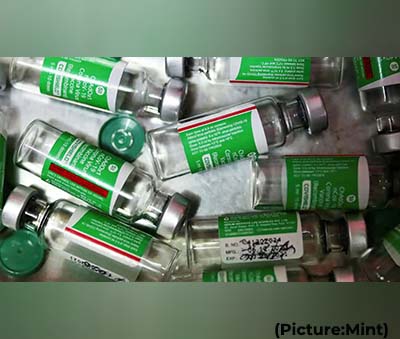 Dr Peter Hotez, Dean of the National School of Tropical Medicine at Baylor College of Medicine (BCM) in Houston during a recent webinar said that the two mRNA vaccines may not impact the world’s low- and middle-income countries, but India’s vaccines, made in collaboration with universities across the world such as BCM and the Oxford University, have “rescued the world” and its contributions must not be underestimated.
Dr Peter Hotez, Dean of the National School of Tropical Medicine at Baylor College of Medicine (BCM) in Houston during a recent webinar said that the two mRNA vaccines may not impact the world’s low- and middle-income countries, but India’s vaccines, made in collaboration with universities across the world such as BCM and the Oxford University, have “rescued the world” and its contributions must not be underestimated. “Why would sleeping with your lights on affect your metabolism? Could that explain why there is a higher prevalence of diabetes or obesity (in society)?” Zee asked.
“Why would sleeping with your lights on affect your metabolism? Could that explain why there is a higher prevalence of diabetes or obesity (in society)?” Zee asked.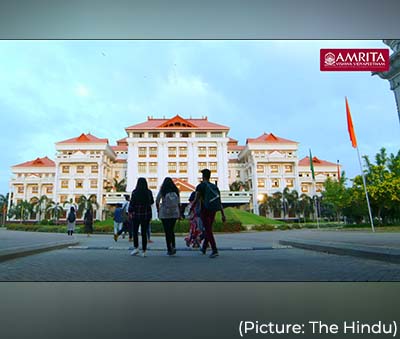 But if you step inside these campuses and peer into the minds of the people who work, teach and learn here, there is something that is distinctly common running through all of them. It is a set of values, beliefs, and practices, all at once.
But if you step inside these campuses and peer into the minds of the people who work, teach and learn here, there is something that is distinctly common running through all of them. It is a set of values, beliefs, and practices, all at once. The Wireless Sensor Network for Landslide Detection, for example, is a low-cost system that integrates knowledge from multiple domains earth science, communication & networking, analog and digital circuits, to name a few. The system has been designed to detect landslides twenty-four hours ahead of time. It has received a U.S patent, and the university, as a result, is now officially recognized as a World Centre of Excellence for Disaster Risk Reduction.
The Wireless Sensor Network for Landslide Detection, for example, is a low-cost system that integrates knowledge from multiple domains earth science, communication & networking, analog and digital circuits, to name a few. The system has been designed to detect landslides twenty-four hours ahead of time. It has received a U.S patent, and the university, as a result, is now officially recognized as a World Centre of Excellence for Disaster Risk Reduction.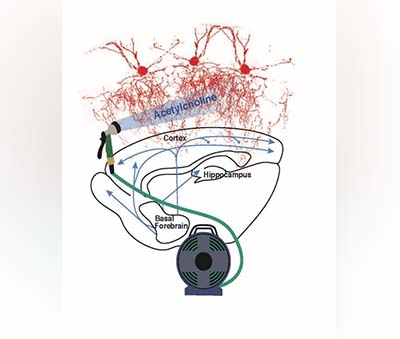 Previous post-mortem studies have shown that the synaptic terminals located at the end of chandelier cell axons appear to be reduced in the brains of patients with schizophrenia.
Previous post-mortem studies have shown that the synaptic terminals located at the end of chandelier cell axons appear to be reduced in the brains of patients with schizophrenia.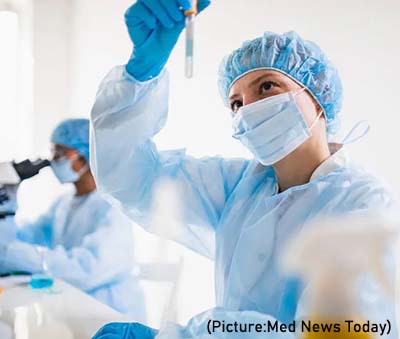 “We were surprised to find this potential therapy shuts down a novel pathway for viral replication and also protects infected cells,” said
“We were surprised to find this potential therapy shuts down a novel pathway for viral replication and also protects infected cells,” said  Dr. Anupam Sibal, President of GAPIO and Group Medical Director, Apollo Hospitals Group and Senior Consultant Pediatric Gastroenterologist and Hepatologist said, “The awardees through their immense contribution in clinical care, academics, research in different medical and surgical specialities exemplify the highest standards that Indian physicians have become synonyms with.”
Dr. Anupam Sibal, President of GAPIO and Group Medical Director, Apollo Hospitals Group and Senior Consultant Pediatric Gastroenterologist and Hepatologist said, “The awardees through their immense contribution in clinical care, academics, research in different medical and surgical specialities exemplify the highest standards that Indian physicians have become synonyms with.”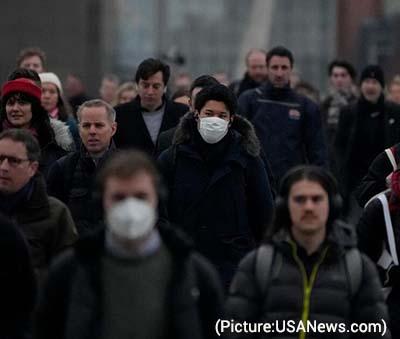 We are concerned that the Biden Administration is not taking preparedness seriously enough. It was a welcome step to see the Administration
We are concerned that the Biden Administration is not taking preparedness seriously enough. It was a welcome step to see the Administration 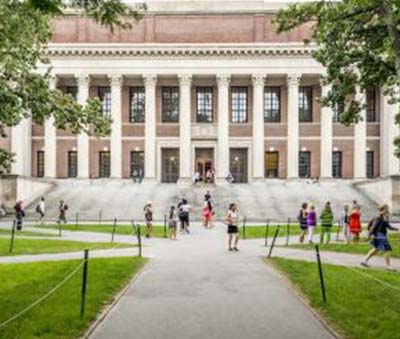 The committee, headed by IIT Council Standing Committee Chairman Dr K Radhakrishnan, has been asked to “submit a framework/structure for the opening of campuses abroad by Higher Education Institutes after examining the existing provisions for the opening of offshore campuses” by March 17.
The committee, headed by IIT Council Standing Committee Chairman Dr K Radhakrishnan, has been asked to “submit a framework/structure for the opening of campuses abroad by Higher Education Institutes after examining the existing provisions for the opening of offshore campuses” by March 17. In adults, small amounts can quickly cause dangerously low blood pressure, dizziness, fainting, or even heart attacks or strokes, said Dr. Kelly Johnson-Arbor, Co-Medical Director of the National Capital Poison Center in Washington, D.C. Higher doses can be fatal, she and her colleagues wrote in The American Journal of Emergency Medicine. Sodium azide levels in COVID-19 rapid test kits are not always high enough to cause low blood pressure in adults, and the iHealth kits being sent out by the U.S. government do not contain any sodium azide at all, Johnson-Arbor said. “However… since children are typically much smaller than adults, they are at a higher risk of experiencing poisonous effects after swallowing any amount,” she said.
In adults, small amounts can quickly cause dangerously low blood pressure, dizziness, fainting, or even heart attacks or strokes, said Dr. Kelly Johnson-Arbor, Co-Medical Director of the National Capital Poison Center in Washington, D.C. Higher doses can be fatal, she and her colleagues wrote in The American Journal of Emergency Medicine. Sodium azide levels in COVID-19 rapid test kits are not always high enough to cause low blood pressure in adults, and the iHealth kits being sent out by the U.S. government do not contain any sodium azide at all, Johnson-Arbor said. “However… since children are typically much smaller than adults, they are at a higher risk of experiencing poisonous effects after swallowing any amount,” she said. “Our COVID-19 vaccine has been administered to hundreds of millions of people around the world, protecting people from COVID-19 infection, hospitalization and death,” Moderna CEO Stéphane Bancel said in a statement. “The totality of real-world data and the full [approval] for Spikevax in the United States reaffirms the importance of vaccination against this virus. This is a momentous milestone in Moderna’s history as it is our first product to achieve licensure in the U.S.”
“Our COVID-19 vaccine has been administered to hundreds of millions of people around the world, protecting people from COVID-19 infection, hospitalization and death,” Moderna CEO Stéphane Bancel said in a statement. “The totality of real-world data and the full [approval] for Spikevax in the United States reaffirms the importance of vaccination against this virus. This is a momentous milestone in Moderna’s history as it is our first product to achieve licensure in the U.S.” “We see space as an area for our once-in-a-century transformation. By going to space, we may be able to develop telecommunications and other technology that will prove valuable to human life,” Sato told The Associated Press.
“We see space as an area for our once-in-a-century transformation. By going to space, we may be able to develop telecommunications and other technology that will prove valuable to human life,” Sato told The Associated Press. “We anticipate that there will be a period of quiet before Covid-19 may come back towards the end of the year, but not necessarily the pandemic coming back,” Kluge said. Top US scientist Anthony Fauci expressed similar optimism on Sunday.
“We anticipate that there will be a period of quiet before Covid-19 may come back towards the end of the year, but not necessarily the pandemic coming back,” Kluge said. Top US scientist Anthony Fauci expressed similar optimism on Sunday.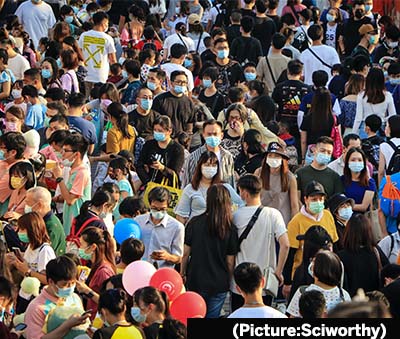 The worst-case scenario is the emergence of a still-more dangerous variant, he said. He said this possibility is more reason for people to get vaccinated and receive booster shots, and to make testing and medical treatment more widely available.
The worst-case scenario is the emergence of a still-more dangerous variant, he said. He said this possibility is more reason for people to get vaccinated and receive booster shots, and to make testing and medical treatment more widely available. Thirteen rounds were conducted on the DD National channel between 7 and 7:30 am. Many leading Yoga gurus and institutes like the Indian Yoga Association, National Yoga Sports Federation participated. In his address, Sonowal highlighted the advantages, “Scientifically, the Surya Namaskar has been known to develop immunity and improve vitality, which is significant to our health during the pandemic conditions.”
Thirteen rounds were conducted on the DD National channel between 7 and 7:30 am. Many leading Yoga gurus and institutes like the Indian Yoga Association, National Yoga Sports Federation participated. In his address, Sonowal highlighted the advantages, “Scientifically, the Surya Namaskar has been known to develop immunity and improve vitality, which is significant to our health during the pandemic conditions.”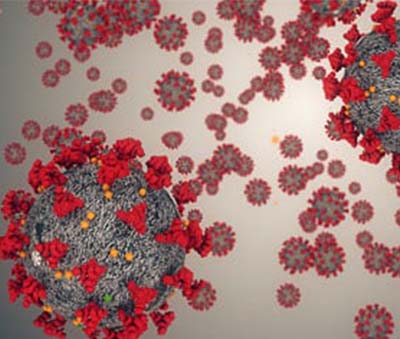 “The study sought to quantify the frequency of and risk factors for severe outcomes in children with COVID-19,” says study co-lead
“The study sought to quantify the frequency of and risk factors for severe outcomes in children with COVID-19,” says study co-lead 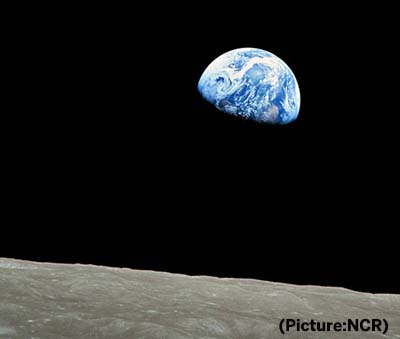 We have learned that our Milky Way is one of 2 trillion known galaxies in the universe. Our galaxy alone has 200 billion stars and most of these stars appear to have planets. The probability of intelligent life somewhere in our galaxy or in another galaxy is high, given these numbers.
We have learned that our Milky Way is one of 2 trillion known galaxies in the universe. Our galaxy alone has 200 billion stars and most of these stars appear to have planets. The probability of intelligent life somewhere in our galaxy or in another galaxy is high, given these numbers. They compared all existing protein structures that bind metals to establish any common features, based on the premise that these shared features were present in ancestral proteins and were diversified and passed down to create the range of proteins we see today.
They compared all existing protein structures that bind metals to establish any common features, based on the premise that these shared features were present in ancestral proteins and were diversified and passed down to create the range of proteins we see today.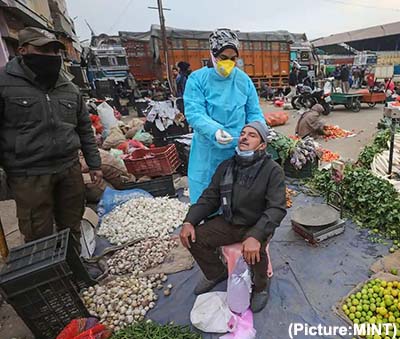 That analysis included all cases of COVID-19 confirmed by PCR tests in England in the first half of December in which the variant could be identified: 56,000 cases of omicron and 269,000 cases of delta.
That analysis included all cases of COVID-19 confirmed by PCR tests in England in the first half of December in which the variant could be identified: 56,000 cases of omicron and 269,000 cases of delta.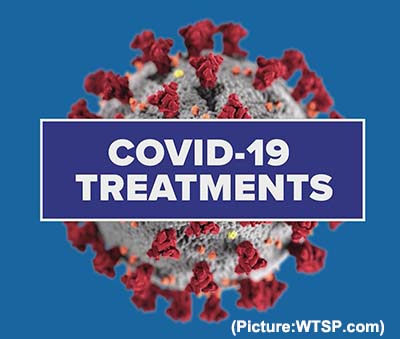 The Food and Drug Administration authorized Pfizer’s drug for adults and children ages 12 and older with a positive COVID-19 test and early symptoms who face the highest risks of hospitalization. That includes older people and those with conditions like obesity and heart disease, though the drug is not recommended for patients with severe kidney or liver problems. Children eligible for the drug must weigh at least 88 pounds (40 kilograms).
The Food and Drug Administration authorized Pfizer’s drug for adults and children ages 12 and older with a positive COVID-19 test and early symptoms who face the highest risks of hospitalization. That includes older people and those with conditions like obesity and heart disease, though the drug is not recommended for patients with severe kidney or liver problems. Children eligible for the drug must weigh at least 88 pounds (40 kilograms). The eye drops will work best for people between the ages of 40 and 55, a Vuity spokesperson told CBS. That age group comprised two clinical trials and is most likely to notice the onset of near vision loss.
The eye drops will work best for people between the ages of 40 and 55, a Vuity spokesperson told CBS. That age group comprised two clinical trials and is most likely to notice the onset of near vision loss.  That makes it the most “massive system around which a planet has been confirmed,”
That makes it the most “massive system around which a planet has been confirmed,”  The new endeavour will base itself a short distance away from the original at Little Dome C, an area located roughly 40km from the Italian-French Concordia Station, on the east Antarctic plateau
The new endeavour will base itself a short distance away from the original at Little Dome C, an area located roughly 40km from the Italian-French Concordia Station, on the east Antarctic plateau “The information people decide to expose themselves to has important consequences for their health, finance and relationships. By better understanding why people choose to get informed, we could develop ways to convince people to educate themselves.”
“The information people decide to expose themselves to has important consequences for their health, finance and relationships. By better understanding why people choose to get informed, we could develop ways to convince people to educate themselves.” The most significant finding was that firing occurs with different timing relative to other brain activity when memories are being retrieved. This slight difference in timing, called “phase offset,” has not been reported in humans before. Together, these results explain how the brain can “re-experience” an event, but also keep track of whether the memory is something new or something previously encoded.
The most significant finding was that firing occurs with different timing relative to other brain activity when memories are being retrieved. This slight difference in timing, called “phase offset,” has not been reported in humans before. Together, these results explain how the brain can “re-experience” an event, but also keep track of whether the memory is something new or something previously encoded. The variant could lead to severe consequences in some regions, the WHO said on Monday. The head of the organisation, Dr Tedros Adhanom Ghebreyesus, renewed a call for a global push to get vaccines to poorer nations.
The variant could lead to severe consequences in some regions, the WHO said on Monday. The head of the organisation, Dr Tedros Adhanom Ghebreyesus, renewed a call for a global push to get vaccines to poorer nations. Burton said that researchers will know just how effective the vaccines are against this variant “in the next couple of weeks.” If manufacturers need to make an omicron variant-specific vaccine, it should take approximately “two to three months” to test and manufacture it, he said.
Burton said that researchers will know just how effective the vaccines are against this variant “in the next couple of weeks.” If manufacturers need to make an omicron variant-specific vaccine, it should take approximately “two to three months” to test and manufacture it, he said.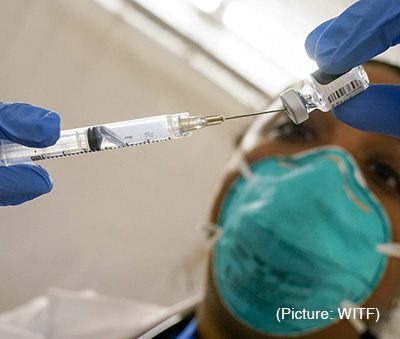 “From the beginning, we have said that as we seek to defeat the pandemic, it is imperative that we are proactive as the virus evolves,” said Moderna CEO Stéphane Bancel. “The mutations in the Omicron variant are concerning and for several days, we have been moving as fast as possible to execute our strategy to address this variant.”
“From the beginning, we have said that as we seek to defeat the pandemic, it is imperative that we are proactive as the virus evolves,” said Moderna CEO Stéphane Bancel. “The mutations in the Omicron variant are concerning and for several days, we have been moving as fast as possible to execute our strategy to address this variant.” The Ministry also issued an advisory to all ASU Drugs Manufacturers Associations seeking the manufacturers of the crude drug/extracts, sellers, ASU drug manufacturing companies, ASU drug exporters not to use Withania somnifera leaves either in crude or extract or any other form for therapeutic purposes under the ambit of ASU drugs.
The Ministry also issued an advisory to all ASU Drugs Manufacturers Associations seeking the manufacturers of the crude drug/extracts, sellers, ASU drug manufacturing companies, ASU drug exporters not to use Withania somnifera leaves either in crude or extract or any other form for therapeutic purposes under the ambit of ASU drugs. None of this means that Kamo’oalewa has to have especially exotic origins. The solar system is littered with asteroids, some of which are captured by the gravity of other planets and become more conventional—if fragmentary—moons. Others don’t orbit other planets in the common way but fall into line in front of them or behind them and pace them in their orbits around the sun, like the flocks of so-called Trojan asteroids that precede and trail Jupiter.
None of this means that Kamo’oalewa has to have especially exotic origins. The solar system is littered with asteroids, some of which are captured by the gravity of other planets and become more conventional—if fragmentary—moons. Others don’t orbit other planets in the common way but fall into line in front of them or behind them and pace them in their orbits around the sun, like the flocks of so-called Trojan asteroids that precede and trail Jupiter.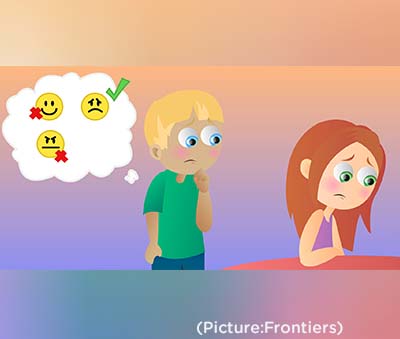 In recent years, researchers have criticised mindreading for being too complicated and demanding to be a common strategy for understanding other people. Julia Wolf provides an example of mindreading: “When I see someone running towards a bus, I infer that this person has the desire to catch the bus,” she says. “In doing so, I can either picture myself in their situation, or draw on my knowledge of general principles regarding the behaviour of others.”
In recent years, researchers have criticised mindreading for being too complicated and demanding to be a common strategy for understanding other people. Julia Wolf provides an example of mindreading: “When I see someone running towards a bus, I infer that this person has the desire to catch the bus,” she says. “In doing so, I can either picture myself in their situation, or draw on my knowledge of general principles regarding the behaviour of others.” But carmakers have found that even Level 2 self-driving — which is two steps behind full autonomous capabilities, or Level 4 — can be costly. Last year, Uber sold its self-driving car division to startup Aurora, ending a five-year run that was marred by litigation and a fatal crash. Tesla’s Autopilot, which controls the car on highways, though a driver is to keep his hand on the steering wheel, has gotten into after a few high-profile crashes.
But carmakers have found that even Level 2 self-driving — which is two steps behind full autonomous capabilities, or Level 4 — can be costly. Last year, Uber sold its self-driving car division to startup Aurora, ending a five-year run that was marred by litigation and a fatal crash. Tesla’s Autopilot, which controls the car on highways, though a driver is to keep his hand on the steering wheel, has gotten into after a few high-profile crashes.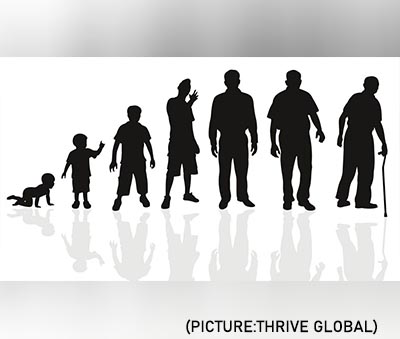 It was published in the ‘Nature Communications Journal’. Insulin and insulin-like growth factor-1 (IGF-1) signalling (IIS) is one of the evolutionarily conserved ageing-modulatory pathways present in life forms ranging from tiny roundworms to humans. The proper reduction of IIS leads to longevity in animals but often causes defects in multiple health parameters including impaired motility, reproduction, and growth.
It was published in the ‘Nature Communications Journal’. Insulin and insulin-like growth factor-1 (IGF-1) signalling (IIS) is one of the evolutionarily conserved ageing-modulatory pathways present in life forms ranging from tiny roundworms to humans. The proper reduction of IIS leads to longevity in animals but often causes defects in multiple health parameters including impaired motility, reproduction, and growth. Webb is ready to help us understand the origins of the universe and begin to answer key questions about our existence, such as where we came from and if we’re alone in the cosmos.
Webb is ready to help us understand the origins of the universe and begin to answer key questions about our existence, such as where we came from and if we’re alone in the cosmos.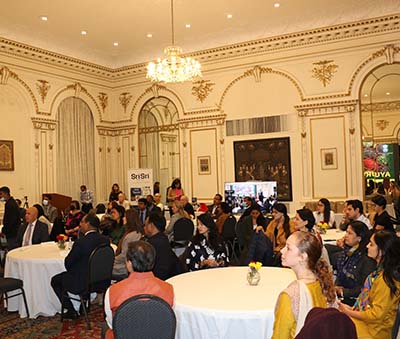 In this regard, he highlighted some data points from the WHO Global Report on Traditional and Complementary Medicine 2019 – number of countries with national policy on traditional and complementary medicine has increased from 25 in 1998 to 98 in 2019 and countries with health insurance cover for traditional and complementary medicine has increased from 37 in 2012 to 45 in 2018. Consul General underlined the vast network of scientific studies being undertaken on Ayurveda in universities in the United States and in research ecosystems across the world including in India.
In this regard, he highlighted some data points from the WHO Global Report on Traditional and Complementary Medicine 2019 – number of countries with national policy on traditional and complementary medicine has increased from 25 in 1998 to 98 in 2019 and countries with health insurance cover for traditional and complementary medicine has increased from 37 in 2012 to 45 in 2018. Consul General underlined the vast network of scientific studies being undertaken on Ayurveda in universities in the United States and in research ecosystems across the world including in India.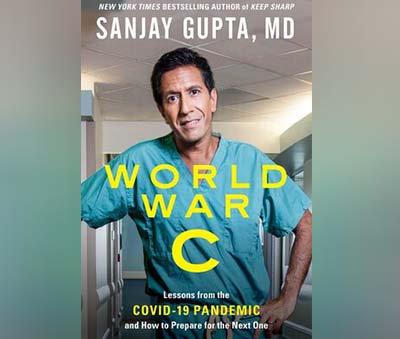 CNN chief medical correspondent Sanjay Gupta, MD, offers an accessible, data-packed answer to our biggest questions about Covid-19: What have we learned about this pandemic and how can we prepare for—or prevent—the next one?
CNN chief medical correspondent Sanjay Gupta, MD, offers an accessible, data-packed answer to our biggest questions about Covid-19: What have we learned about this pandemic and how can we prepare for—or prevent—the next one? Gupta argues that we need to prepare for a new era where pandemics will be more frequent, and possibly even more deadly. As the doctor who’s been holding America’s hand through the crisis with compassion, clarity, and well-earned wisdom, he gives you the unvarnished story behind the pandemic, including insights about the novel virus’s behavior, and offers practical tools to ready ourselves for what lies ahead. He answers critical questions: Can we stamp out the virus for good (and if not, how do we live with it)? Should we put our parents in a nursing home? Where should we live? What should we stockpile? What should we know before taking a trip? Does it make sense to spend more on health insurance to deal with any long-term effects? How do you decide when it’s safe to go to a public pool or schedule elective surgery? What should Covid survivors know about protecting their future health? What if you become a long-hauler with chronic health challenges stemming?
Gupta argues that we need to prepare for a new era where pandemics will be more frequent, and possibly even more deadly. As the doctor who’s been holding America’s hand through the crisis with compassion, clarity, and well-earned wisdom, he gives you the unvarnished story behind the pandemic, including insights about the novel virus’s behavior, and offers practical tools to ready ourselves for what lies ahead. He answers critical questions: Can we stamp out the virus for good (and if not, how do we live with it)? Should we put our parents in a nursing home? Where should we live? What should we stockpile? What should we know before taking a trip? Does it make sense to spend more on health insurance to deal with any long-term effects? How do you decide when it’s safe to go to a public pool or schedule elective surgery? What should Covid survivors know about protecting their future health? What if you become a long-hauler with chronic health challenges stemming?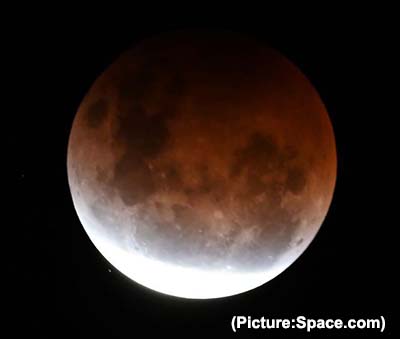 In India, a small part of Arunachal Pradesh and Assam will experience the partial eclipse, and those from Uttar Pradesh, Bihar, Jharkhand can see the end part of the penumbral eclipse. A penumbral lunar eclipse takes place when the Moon, Sun, and Earth are imperfectly aligned and the Moon moves through the outer part of Earth’s shadow called the penumbra.
In India, a small part of Arunachal Pradesh and Assam will experience the partial eclipse, and those from Uttar Pradesh, Bihar, Jharkhand can see the end part of the penumbral eclipse. A penumbral lunar eclipse takes place when the Moon, Sun, and Earth are imperfectly aligned and the Moon moves through the outer part of Earth’s shadow called the penumbra. “We invite you to the AAPI 40th Annual Convention in the beautiful city of San Antonio, Texas,” Dr. Jayesh Shah, past President of AAPI and Chair of AAPI Convention 2022 said. Welcoming the delegates to his “Home city of San Antonio,” which is hosting the 2nd national convention, Dr. Shah said, “We have convened a fantastic group of people to meet the needs of the 2022 convention and are very excited about this year. Please reach out to any one of the representatives from the San Antonio team with questions or comments.”
“We invite you to the AAPI 40th Annual Convention in the beautiful city of San Antonio, Texas,” Dr. Jayesh Shah, past President of AAPI and Chair of AAPI Convention 2022 said. Welcoming the delegates to his “Home city of San Antonio,” which is hosting the 2nd national convention, Dr. Shah said, “We have convened a fantastic group of people to meet the needs of the 2022 convention and are very excited about this year. Please reach out to any one of the representatives from the San Antonio team with questions or comments.” “Our physician members have worked very hard during the covid 19 pandemic as the 2022 convention is a perfect time to heal the healers with a special focus on wellness,” said Dr. Jayesh Shah. Accordingly, some of the major themes at the convention include: Yoga and Meditation practices, Welcome kit with books & self-care supplies, A Personal Reflexology Session, Take home wellness routine, Ailment based yoga therapy sessions, Workshop on Spiritual well-being, Book talk with Yoga Gurus, including on the science of Yoga & Lifestyle medicine, as well as a unique opportunity to visit first of its kind in San Antonio, Aum Ashram as part of the Wellness session.
“Our physician members have worked very hard during the covid 19 pandemic as the 2022 convention is a perfect time to heal the healers with a special focus on wellness,” said Dr. Jayesh Shah. Accordingly, some of the major themes at the convention include: Yoga and Meditation practices, Welcome kit with books & self-care supplies, A Personal Reflexology Session, Take home wellness routine, Ailment based yoga therapy sessions, Workshop on Spiritual well-being, Book talk with Yoga Gurus, including on the science of Yoga & Lifestyle medicine, as well as a unique opportunity to visit first of its kind in San Antonio, Aum Ashram as part of the Wellness session.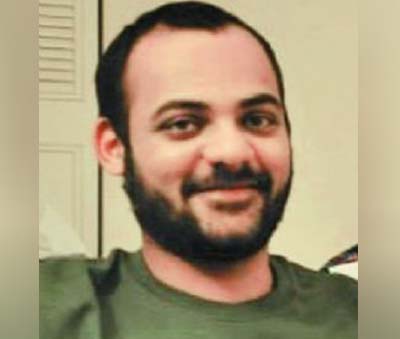 Metkar’s identification as the “first named inventor” is in the document filed by Moderna to dispute the U.S. government’s National Institutes of Health assertion that its scientists should also be credited as inventors of the vaccine, which was developed in collaboration with it and with $1.53 billion provided by the administration of former President Donald Trump under the Operation Warp Speed program to quickly produce vaccines.
Metkar’s identification as the “first named inventor” is in the document filed by Moderna to dispute the U.S. government’s National Institutes of Health assertion that its scientists should also be credited as inventors of the vaccine, which was developed in collaboration with it and with $1.53 billion provided by the administration of former President Donald Trump under the Operation Warp Speed program to quickly produce vaccines. Like Pfizer-BioNTech’s adult vaccine, the pediatric version is meant to be given in two doses, spaced three weeks apart. Each dose, however, is smaller than that given to adults.
Like Pfizer-BioNTech’s adult vaccine, the pediatric version is meant to be given in two doses, spaced three weeks apart. Each dose, however, is smaller than that given to adults. The TAG — which is an independent advisory group that recommends to WHO on whether a Covid-19 vaccine fulfils criteria for EUL or not — will meet next on November 3.
The TAG — which is an independent advisory group that recommends to WHO on whether a Covid-19 vaccine fulfils criteria for EUL or not — will meet next on November 3. To improve climate simulations, scientists are looking to the potential of artificial intelligence (AI). AI has offered profound insights in fields from materials science to manufacturing, and climate researchers are excited to explore how AI can be used to revolutionize how the Earth system, and especially its water cycle, can be simulated in order to dramatically improve our understanding and representation of the real world. In particular, AI offers the potential to dramatically increase the accuracy of predictions down to the scales of interest to scientists, and even stakeholders focused on designing, financing and deploying equitable climate solutions to America’s most disadvantaged communities.
To improve climate simulations, scientists are looking to the potential of artificial intelligence (AI). AI has offered profound insights in fields from materials science to manufacturing, and climate researchers are excited to explore how AI can be used to revolutionize how the Earth system, and especially its water cycle, can be simulated in order to dramatically improve our understanding and representation of the real world. In particular, AI offers the potential to dramatically increase the accuracy of predictions down to the scales of interest to scientists, and even stakeholders focused on designing, financing and deploying equitable climate solutions to America’s most disadvantaged communities. Certain people who received Pfizer vaccinations months ago already are eligible for a booster and now the Centers for Disease Control and Prevention says specific Moderna and Johnson & Johnson recipients qualify, too. And in a bigger change, the agency is allowing the flexibility of “mixing and matching” that extra dose regardless of which type people received first.
Certain people who received Pfizer vaccinations months ago already are eligible for a booster and now the Centers for Disease Control and Prevention says specific Moderna and Johnson & Johnson recipients qualify, too. And in a bigger change, the agency is allowing the flexibility of “mixing and matching” that extra dose regardless of which type people received first. Led by Professor Shulamit Levenberg, Ph.D. student Rita Beckerman from the Stem Cell and Tissue Engineering Laboratory in the Technion’s Faculty of Biomedical Engineering presents a novel treatment approach, using an autograft of muscle cells engineered to take in sugar at increased rates. Mice treated in this manner displayed normal blood sugar levels for months after a single procedure. The group’s findings were recently published in
Led by Professor Shulamit Levenberg, Ph.D. student Rita Beckerman from the Stem Cell and Tissue Engineering Laboratory in the Technion’s Faculty of Biomedical Engineering presents a novel treatment approach, using an autograft of muscle cells engineered to take in sugar at increased rates. Mice treated in this manner displayed normal blood sugar levels for months after a single procedure. The group’s findings were recently published in  The research updates a similar 2013 paper revealing that 97% of studies published between 1991 and 2012 supported the idea that human activities are altering Earth’s climate. The current survey examines the literature published from 2012 to November 2020 to explore whether the consensus has changed.
The research updates a similar 2013 paper revealing that 97% of studies published between 1991 and 2012 supported the idea that human activities are altering Earth’s climate. The current survey examines the literature published from 2012 to November 2020 to explore whether the consensus has changed. “The graphite inside this ruby is really unique. It’s the first time we’ve seen evidence of ancient life in ruby-bearing rocks,” says Yakymchuk. “The presence of graphite also gives us more clues to determine how rubies formed at this location, something that is impossible to do directly based on a ruby’s colour and chemical composition.”
“The graphite inside this ruby is really unique. It’s the first time we’ve seen evidence of ancient life in ruby-bearing rocks,” says Yakymchuk. “The presence of graphite also gives us more clues to determine how rubies formed at this location, something that is impossible to do directly based on a ruby’s colour and chemical composition.” The COVID-19 vaccine made by
The COVID-19 vaccine made by  In 2003, scientists observed in a lab a novel type of phase change in minerals–a spin change in iron in ferropericlase, the second most abundant component of the Earth’s lower mantle. A spin change, or spin crossover, can happen in minerals like ferropericlase under an external stimulus, such as pressure or temperature. Over the next few years, experimental and theoretical groups confirmed this phase change in both ferropericlase and bridgmanite, the most abundant phase of the lower mantle. But no one was quite sure why or where this was happening.
In 2003, scientists observed in a lab a novel type of phase change in minerals–a spin change in iron in ferropericlase, the second most abundant component of the Earth’s lower mantle. A spin change, or spin crossover, can happen in minerals like ferropericlase under an external stimulus, such as pressure or temperature. Over the next few years, experimental and theoretical groups confirmed this phase change in both ferropericlase and bridgmanite, the most abundant phase of the lower mantle. But no one was quite sure why or where this was happening. The CDC published data Oct. 15 that breaks down the rate of COVID-19 cases and deaths by vaccination status and vaccine type. The rates are based on data from 16 public health departments — representing about 30 percent of the U.S. population — and cover April through the end of August.
The CDC published data Oct. 15 that breaks down the rate of COVID-19 cases and deaths by vaccination status and vaccine type. The rates are based on data from 16 public health departments — representing about 30 percent of the U.S. population — and cover April through the end of August.  “If you boost people who have originally received J&J with either Moderna or Pfizer, the level of antibodies that you induce in them is much higher than if you boost them with the original J&J,” Fauci told reporters during a television interview.
“If you boost people who have originally received J&J with either Moderna or Pfizer, the level of antibodies that you induce in them is much higher than if you boost them with the original J&J,” Fauci told reporters during a television interview. A highly anticipated study of “mixing and matching” Covid-19 vaccines found the approach to be safe and effective, although the Moderna and Pfizer-BioNTech vaccines were found to spark stronger immune system responses than Johnson & Johnson’s vaccine. “Mixing and matching” refers to giving a booster dose of a vaccine different from the vaccine type that was used for the initial vaccination series.
A highly anticipated study of “mixing and matching” Covid-19 vaccines found the approach to be safe and effective, although the Moderna and Pfizer-BioNTech vaccines were found to spark stronger immune system responses than Johnson & Johnson’s vaccine. “Mixing and matching” refers to giving a booster dose of a vaccine different from the vaccine type that was used for the initial vaccination series. The Crew-3 mission is part of NASA’s
The Crew-3 mission is part of NASA’s  Women come to a hospital Emergency Department or doctor’s office complaining of chest pain, shortness of breath, nausea, lightheadedness, jaw pain, or other symptoms considered concerning for a heart problem. The women might undergo standard testing to see if they have a critical cholesterol blockage in their arteries, the hallmark of obstructive coronary artery disease.
Women come to a hospital Emergency Department or doctor’s office complaining of chest pain, shortness of breath, nausea, lightheadedness, jaw pain, or other symptoms considered concerning for a heart problem. The women might undergo standard testing to see if they have a critical cholesterol blockage in their arteries, the hallmark of obstructive coronary artery disease. The WHO said on Wednesday its recommendation is based on results from more than 2.3 million doses of the vaccine that have been administered to more than 800,000 children in pilot countries Ghana, Kenya and Malawi since 2019, Xinhua news agency reported.
The WHO said on Wednesday its recommendation is based on results from more than 2.3 million doses of the vaccine that have been administered to more than 800,000 children in pilot countries Ghana, Kenya and Malawi since 2019, Xinhua news agency reported. The release of the “Transparency in the U.S. Nuclear Weapons Stockpile” fact sheet comes as the Biden administration is conducting a review of its nuclear weapons policy and capabilities ahead of a 2022 meeting of the Nuclear Non-Proliferation Treaty conference, where the US and other nuclear powers who are party to the Treaty will review each signatory’s disarmament commitments. “Increasing the transparency of states’ nuclear stockpiles is important to nonproliferation and disarmament efforts, including commitments under the Nuclear Non-Proliferation Treaty, and efforts to address all types of nuclear weapons, including deployed and non-deployed, and strategic and non-strategic,” the State Department said.
The release of the “Transparency in the U.S. Nuclear Weapons Stockpile” fact sheet comes as the Biden administration is conducting a review of its nuclear weapons policy and capabilities ahead of a 2022 meeting of the Nuclear Non-Proliferation Treaty conference, where the US and other nuclear powers who are party to the Treaty will review each signatory’s disarmament commitments. “Increasing the transparency of states’ nuclear stockpiles is important to nonproliferation and disarmament efforts, including commitments under the Nuclear Non-Proliferation Treaty, and efforts to address all types of nuclear weapons, including deployed and non-deployed, and strategic and non-strategic,” the State Department said. “When I first saw this little tree, while out on a forest trail leading from the field station, it was the fruit — looking like an orange-colored Chinese lantern and juicy when ripe with several seeds — that caught my attention,” says Robin Foster, the scientist who originally collected the mystery plant in Peru’s Manu National Park, a retired curator at Chicago’s Field Museum and now a researcher with the Smithsonian Tropical Research Institute. “I didn’t really think it was special, except for the fact that it had characteristics of plants in several different plant families, and didn’t fall neatly into any family. Usually I can tell the family by a quick glance, but damned if I could place this one.”
“When I first saw this little tree, while out on a forest trail leading from the field station, it was the fruit — looking like an orange-colored Chinese lantern and juicy when ripe with several seeds — that caught my attention,” says Robin Foster, the scientist who originally collected the mystery plant in Peru’s Manu National Park, a retired curator at Chicago’s Field Museum and now a researcher with the Smithsonian Tropical Research Institute. “I didn’t really think it was special, except for the fact that it had characteristics of plants in several different plant families, and didn’t fall neatly into any family. Usually I can tell the family by a quick glance, but damned if I could place this one.” These findings,
These findings,  It found that about 36% of Covid patients still reported disease symptoms three and six months after diagnosis. Most previous studies estimated the so-called long-haul Covid to afflict 10% to 30% of patients. The researchers also found that of those who had long COVID three to six months after diagnosis, roughly 40% had no record of such symptoms in the prior three months.
It found that about 36% of Covid patients still reported disease symptoms three and six months after diagnosis. Most previous studies estimated the so-called long-haul Covid to afflict 10% to 30% of patients. The researchers also found that of those who had long COVID three to six months after diagnosis, roughly 40% had no record of such symptoms in the prior three months. Hahn is first author of the new study, which adds critical nuance to a body of literature that explores how media content affects children. While many previous studies have focused on broad conceptualizations, like prosocial or antisocial effects that might be associated with specific content, Hahn’s study looks at how exposure to content featuring specific moral values (care, fairness, loyalty and authority) might influence the weight kids place on those values.
Hahn is first author of the new study, which adds critical nuance to a body of literature that explores how media content affects children. While many previous studies have focused on broad conceptualizations, like prosocial or antisocial effects that might be associated with specific content, Hahn’s study looks at how exposure to content featuring specific moral values (care, fairness, loyalty and authority) might influence the weight kids place on those values.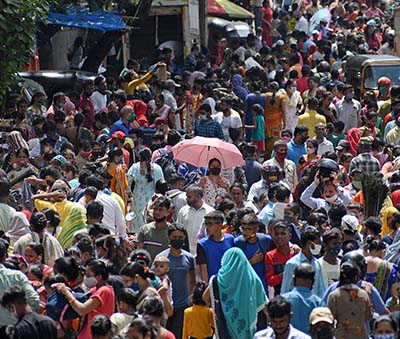 In the course of the COVID-19 pandemic, thousands of variants have been identified, four of which are considered “
In the course of the COVID-19 pandemic, thousands of variants have been identified, four of which are considered “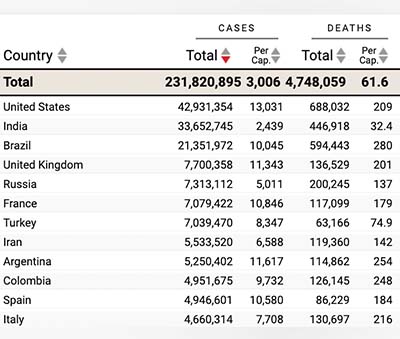 Coronaviruses more prone to mutations than other germs
Coronaviruses more prone to mutations than other germs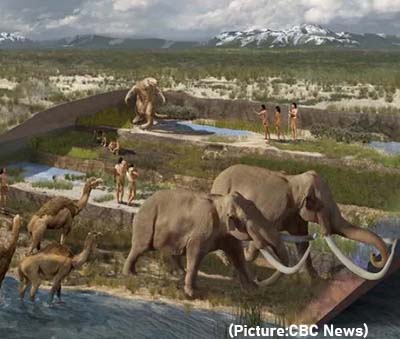 The prints were buried in layers of soil in the national park, with scientists from the US Geological Survey analyzing seeds embedded in the tracks to calculate the age of the fossils. Researchers also determined that the dozen footprints found belonged to a variety of people, mostly children and teenagers. Previously, scientists had widely assumed that the earliest appearance of humans in the Americas was 11,000 to 13,000 years ago because of stone spears found throughout North America and associated with what is known as the Clovis culture.
The prints were buried in layers of soil in the national park, with scientists from the US Geological Survey analyzing seeds embedded in the tracks to calculate the age of the fossils. Researchers also determined that the dozen footprints found belonged to a variety of people, mostly children and teenagers. Previously, scientists had widely assumed that the earliest appearance of humans in the Americas was 11,000 to 13,000 years ago because of stone spears found throughout North America and associated with what is known as the Clovis culture. The US, where Covid-19 is now officially the deadliest epidemic since the Spanish Flu of 1918 with over 675,000 deaths, has also seen a rather high number of infections among children. For the week ended September 9, new infections among children totaled 243,000 and constitute 30% of all new infections in the country. Up until January this year, children made up just 15% of new Covid-19 infections in the US.
The US, where Covid-19 is now officially the deadliest epidemic since the Spanish Flu of 1918 with over 675,000 deaths, has also seen a rather high number of infections among children. For the week ended September 9, new infections among children totaled 243,000 and constitute 30% of all new infections in the country. Up until January this year, children made up just 15% of new Covid-19 infections in the US. Dr. Anupama Gotimukula, President of AAPI while congratulating the Editorial Team of JAAPI said, “This is the fruit of our teamwork and it’s a good opportunity for the members of AAPI to contribute scientific articles, and make it better as we move on. JAAPI is a peer-reviewed medical and health journal published by the AAPI. In line with the vision and mission of AAPI, JAAPI is dedicated to facilitate physicians to excel in patient care, teaching and research, and thus pursue their aspirations in professional and community affairs. JAAPI is open to contributions from physicians and scientists of all backgrounds and from all over the world.” In his introductory note, the Founding Editor-in-Chief of the peer-reviewed JAAPI, Dr. Bellamkonda K. Kishore, who is an outstanding academician, innovator, and entrepreneur, writes, “ We are pleased to present you the Summer issue of peer-reviewed JAAPI. It is made possible with the unconditional support of AAPI President Dr. Anupama Gotimukula and the Executive Committee Members, the relentless work of Members of the JAAPI Editorial Board, Editorial Advisors, and Reviewers as well as Ms. Vijaya Kodali, the Chief Operations Officer of AAPI.”
Dr. Anupama Gotimukula, President of AAPI while congratulating the Editorial Team of JAAPI said, “This is the fruit of our teamwork and it’s a good opportunity for the members of AAPI to contribute scientific articles, and make it better as we move on. JAAPI is a peer-reviewed medical and health journal published by the AAPI. In line with the vision and mission of AAPI, JAAPI is dedicated to facilitate physicians to excel in patient care, teaching and research, and thus pursue their aspirations in professional and community affairs. JAAPI is open to contributions from physicians and scientists of all backgrounds and from all over the world.” In his introductory note, the Founding Editor-in-Chief of the peer-reviewed JAAPI, Dr. Bellamkonda K. Kishore, who is an outstanding academician, innovator, and entrepreneur, writes, “ We are pleased to present you the Summer issue of peer-reviewed JAAPI. It is made possible with the unconditional support of AAPI President Dr. Anupama Gotimukula and the Executive Committee Members, the relentless work of Members of the JAAPI Editorial Board, Editorial Advisors, and Reviewers as well as Ms. Vijaya Kodali, the Chief Operations Officer of AAPI.” “This is a historical milestone in the annals of AAPI. The foundation for this milestone was laid one year ago in February 2020 by our visionary leaders, Drs. Sudhakar Jonnalagadda and Suresh Reddy,” said Dr. Kishore, said. Describing the vision and the efforts that have given shape to the launching of JAAPI, Dr. Kishore said, “A Peer Review Journal needs group synergy and cultivation of the culture of peer-review process and publication. It is like agriculture – crop after crop. But the very fact that we are able to assemble a passionate and diligent team of editorial board members, and developed the required group synergy and culture bringing out the journal as planned, itself is a sign that AAPI has reached a level of academic maturity, capability and perfection.”
“This is a historical milestone in the annals of AAPI. The foundation for this milestone was laid one year ago in February 2020 by our visionary leaders, Drs. Sudhakar Jonnalagadda and Suresh Reddy,” said Dr. Kishore, said. Describing the vision and the efforts that have given shape to the launching of JAAPI, Dr. Kishore said, “A Peer Review Journal needs group synergy and cultivation of the culture of peer-review process and publication. It is like agriculture – crop after crop. But the very fact that we are able to assemble a passionate and diligent team of editorial board members, and developed the required group synergy and culture bringing out the journal as planned, itself is a sign that AAPI has reached a level of academic maturity, capability and perfection.” People who tested positive for SARS-CoV-2 after one or two vaccine doses had significantly lower odds of severe disease or hospitalisation than unvaccinated people, according to a large-scale study investigating COVID-19 breakthrough infections published in The Lancet Infectious Diseases journal. Researchers also found that the odds of experiencing long COVID (illness lasting 28 days or more after a positive test) were cut in half for people who received two vaccines doses.
People who tested positive for SARS-CoV-2 after one or two vaccine doses had significantly lower odds of severe disease or hospitalisation than unvaccinated people, according to a large-scale study investigating COVID-19 breakthrough infections published in The Lancet Infectious Diseases journal. Researchers also found that the odds of experiencing long COVID (illness lasting 28 days or more after a positive test) were cut in half for people who received two vaccines doses. The first clue came when the scientists examined images from VLASS, which began observations in 2017, and found an object brightly emitting radio waves but which had not appeared in an earlier VLA sky survey, called Faint Images of the Radio Sky at Twenty centimeters (FIRST). They made subsequent observations of the object, designated VT 1210+4956, using the VLA and the Keck telescope in Hawaii. They determined that the bright radio emission was coming from the outskirts of a dwarf, star-forming galaxy some 480 million light-years from Earth. They later found that an instrument aboard the International Space Station had detected a burst of X-rays coming from the object in 2014.
The first clue came when the scientists examined images from VLASS, which began observations in 2017, and found an object brightly emitting radio waves but which had not appeared in an earlier VLA sky survey, called Faint Images of the Radio Sky at Twenty centimeters (FIRST). They made subsequent observations of the object, designated VT 1210+4956, using the VLA and the Keck telescope in Hawaii. They determined that the bright radio emission was coming from the outskirts of a dwarf, star-forming galaxy some 480 million light-years from Earth. They later found that an instrument aboard the International Space Station had detected a burst of X-rays coming from the object in 2014. A new study has now pointed out that these changes in the Arctic region induced by anthropogenic global warming have disrupted a wind system called Stratospheric Polar Vortex (SPV). This stretching of SPV can lead to extreme cold events in parts of Asia and North America. The report published Friday in Science adds that this SPV disruption was behind the February 2021 Texas cold wave. “The SPV consists of strong westerly winds from 10km to 50km above the surface. It peaks at around 50 m/s on average near 50km and is strongest in mid-winter, however, on occasion it can weaken, and sometimes the winds reverse direction entirely,” explains one of the authors Prof. Chaim Garfinkel in an email to indianexpress.com. He is the Head of the Graduate Program in Atmospheric Science at Hebrew University, Israel. He adds that these stretching events almost certainly occurred before greenhouse gas emissions began increasing, but the current emissions are leading to an increase in the occurrence of these types of events.
A new study has now pointed out that these changes in the Arctic region induced by anthropogenic global warming have disrupted a wind system called Stratospheric Polar Vortex (SPV). This stretching of SPV can lead to extreme cold events in parts of Asia and North America. The report published Friday in Science adds that this SPV disruption was behind the February 2021 Texas cold wave. “The SPV consists of strong westerly winds from 10km to 50km above the surface. It peaks at around 50 m/s on average near 50km and is strongest in mid-winter, however, on occasion it can weaken, and sometimes the winds reverse direction entirely,” explains one of the authors Prof. Chaim Garfinkel in an email to indianexpress.com. He is the Head of the Graduate Program in Atmospheric Science at Hebrew University, Israel. He adds that these stretching events almost certainly occurred before greenhouse gas emissions began increasing, but the current emissions are leading to an increase in the occurrence of these types of events. Affiliated with various US medical organizations and institutions, the soft-spoken Dr. Murthy is a Resuscitation Educator and Researcher, Advisor to Resuscitation Training Centers, Champion of Community Cardiopulmonary Resuscitation (CPR), and a Leader of US Organized Medicine. His Mission has been “Saving Lives” in Sudden Cardiac Arrests and common heart issues.
Affiliated with various US medical organizations and institutions, the soft-spoken Dr. Murthy is a Resuscitation Educator and Researcher, Advisor to Resuscitation Training Centers, Champion of Community Cardiopulmonary Resuscitation (CPR), and a Leader of US Organized Medicine. His Mission has been “Saving Lives” in Sudden Cardiac Arrests and common heart issues. The Founder of Chicago Medical Society’s Community CPR Project Saving More Illinois Lives through Education (SMILE,) Dr. Murthy, takes upon himself the life-long mission of saving lives through effective preventive measures. He says, “Almost one in three among South Asians may die from heart disease before 65 years of age.”
The Founder of Chicago Medical Society’s Community CPR Project Saving More Illinois Lives through Education (SMILE,) Dr. Murthy, takes upon himself the life-long mission of saving lives through effective preventive measures. He says, “Almost one in three among South Asians may die from heart disease before 65 years of age.” Dr. Murthy served the American Heart Association in different capacities. Such as National and International Faculty, Member of the International Committee, and Advisor to AHA International Training Centers, Also as AHA Liaison to Medical Organizations in the USA too. He co-chaired programs at the AHA Scientific Sessions and delivered Resuscitation-based lectures at prestigious US medical institutions.
Dr. Murthy served the American Heart Association in different capacities. Such as National and International Faculty, Member of the International Committee, and Advisor to AHA International Training Centers, Also as AHA Liaison to Medical Organizations in the USA too. He co-chaired programs at the AHA Scientific Sessions and delivered Resuscitation-based lectures at prestigious US medical institutions. U.S. Surgeon General Dr. Vivek Murthy has defended the Biden administration’s plans to
U.S. Surgeon General Dr. Vivek Murthy has defended the Biden administration’s plans to